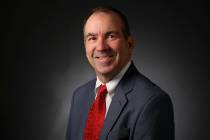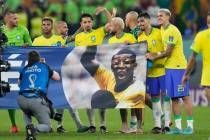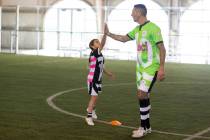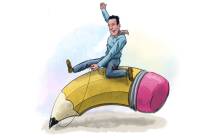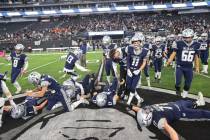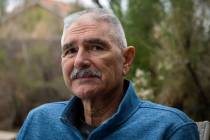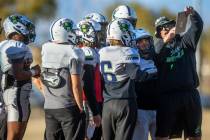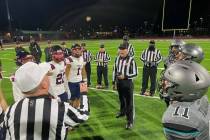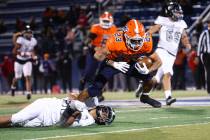You can’t tell these guys ‘with’ a program
It was 1:45 p.m. Monday when Kawhi Leonard, formerly of San Diego State, and nine guys I didn’t recognize took the court at Impact Basketball — the “arena” part of the old All-American Sports Park on Sunset Road, where there once was a go-kart track and batting cages and Ms. Pac-Man machines. The “game” pitting NBA guys against other NBA guys trying to get in shape during the labor lockout was supposed to start at 1:30, more or less.
Bear with me. There may be other words listed here in quotation marks that normally don’t appear that way. Such as “defense.”
After Leonard missed a couple of midrange jumpers the scouts insist he’ll have to make for the San Antonio Spurs — that is, if the Spurs and their NBA brethren ever return to “work” — one of his teammates, a big guy wearing No. 2, knocked one down from the top of the key. Historians, take note: This was the first basket in Impact Basketball Competitive Training Series Volume 1 history.
A trip to the scorer’s table revealed No. 2 on the White team — Team A in the IB1 one-page “media guide” that didn’t list jersey numbers — was Marreese Speights of the Philadelphia 76ers.
IB1 suggests there could be an IB2, which suggests the NBA lockout might last a lot longer than the NFL one.
The NFL lockout was mostly about owners and players dividing money; the NBA one is more about owners trying to break even, which, they say, is impossible given the current NBA “system.” That’s why the Lakers likely won’t be playing a preseason game at the Thomas & Mack Center this year or why LeBron likely won’t be taking his talents back to South Beach — or even Sacramento — anytime soon, unless hastily thrown together “leagues” for NBA players trying to get in shape are held there, too.
There were 36 spectators in the stands, including two young men in white shirts and ties who appeared to be fledgling pro basketball agents, or full-on Mormon missionaries, though I didn’t notice any bicycles parked among the Escalades outside.
But except for the lady working the concession stand, nobody was outwardly trying to make a buck, and that surely was different. So, too, was the industrial corrugated steel wall behind the benches, which harkened to when NBA games were played in creaky gymnasiums galled gardens or armories and bereft of luxury suites and proper ventilation. I think the old Syracuse Nationals might have played in an armory, though it could have been a war memorial; a lot of defunct NBA teams also played in creaky gymnasiums called war memorials.
There was no public address announcer, no scoreboard and no Lady Gaga during timeouts, so there were no headaches brought on by high decibels or pop stars imitating Madonna. There were some nice plays, because even NBA players who sit the bench and aren’t in tip-top shape are quite capable of making nice plays when competitive juices begin to flow. This happened at the end of the third quarter, when guys started chirping about the officiating and leaking competitive juices.
No. 1 on the Green team — Team H in the one-page media guide with no numbers — turned to me during a free throw and started to complain about the zebras, thereby becoming the first NBA player to speak to me, unsolicited, since Tom Boerwinkle of the original (or close enough) Chicago Bulls tousled my hair and called me “Tiger” when I was a little boy. Boerwinkle was 7 feet tall and had a bad haircut, and I remember being a little frightened, but not nearly as frightened as when Steve Garvey called me “Tiger” in the 51s’ clubhouse when I was 45.
Another trip to the scorer’s table revealed No. 1 on the Green team was Dahntay Jones of the Indiana Pacers, who played at Duke.
Had I known this, I would have said something snarky such as “You’re in Vegas, baby, and Dookies never get a call in Vegas.”
Jones scored 30 points, more or less, and the Green team won 96-86, more or less, and on the way out of the “arena,” a makeshift sign said the go-kart track was “open.” But it wasn’t. Not even more or less.
Las Vegas Review-Journal columnist Ron Kantowski can be reached at rkantowski@reviewjournal.com or 702-383-0352. Follow him on Twitter: @ronkantowski.



